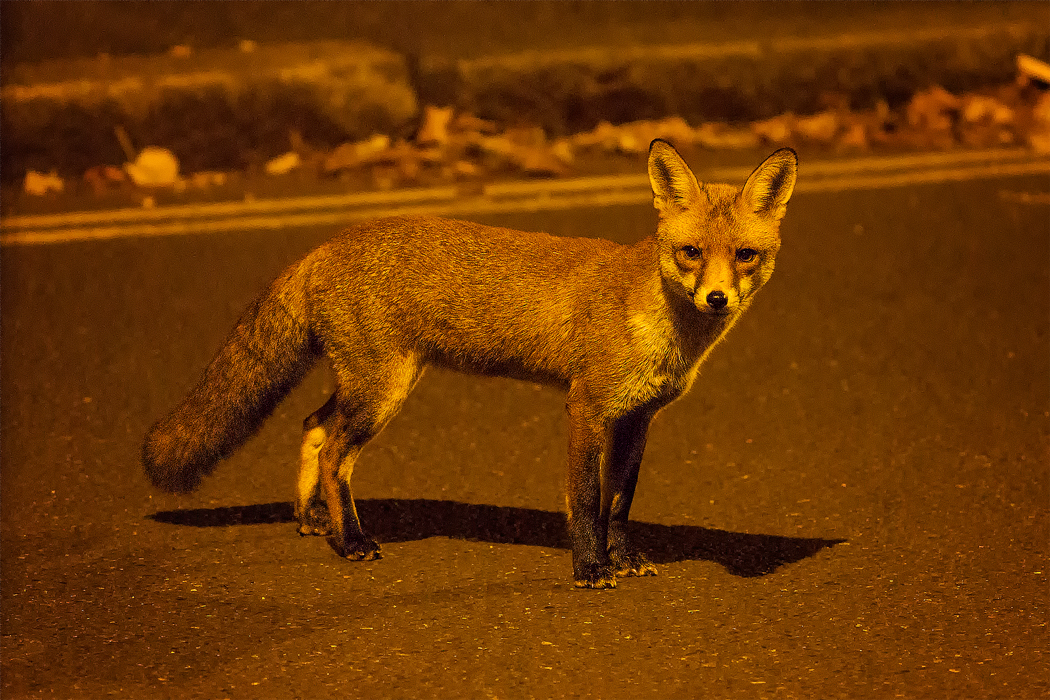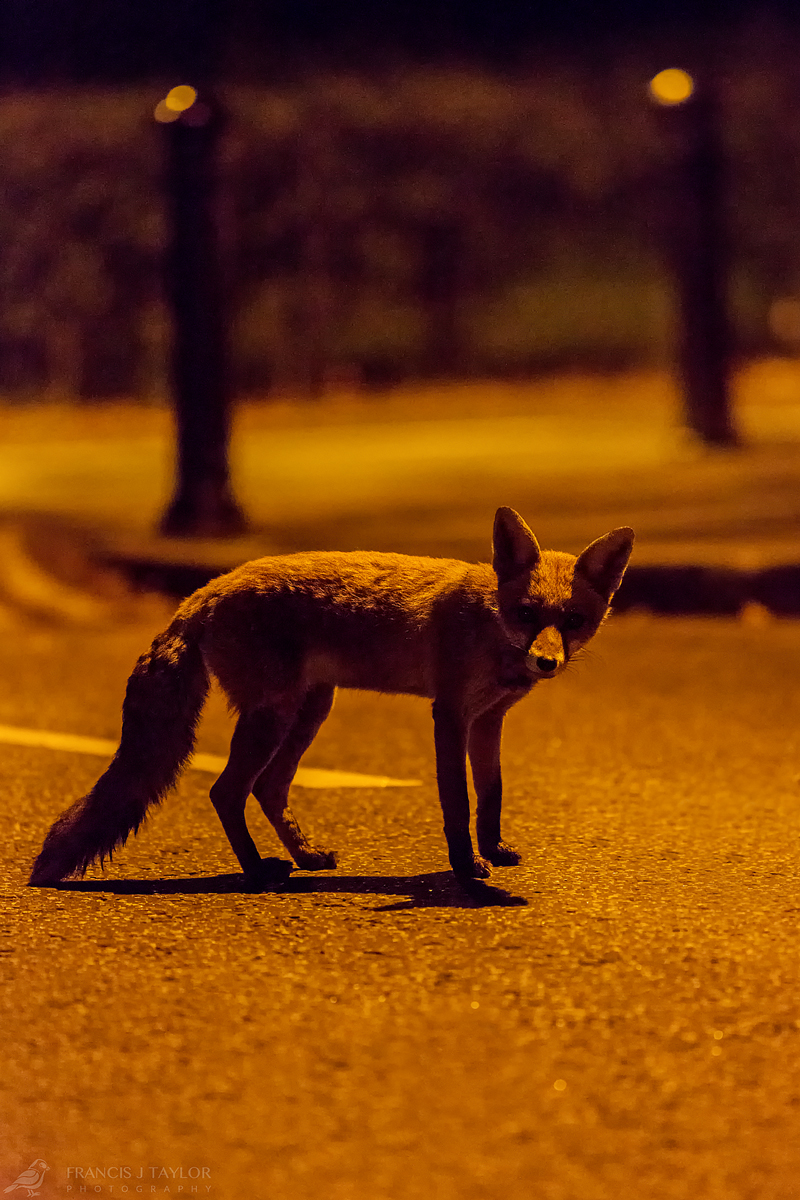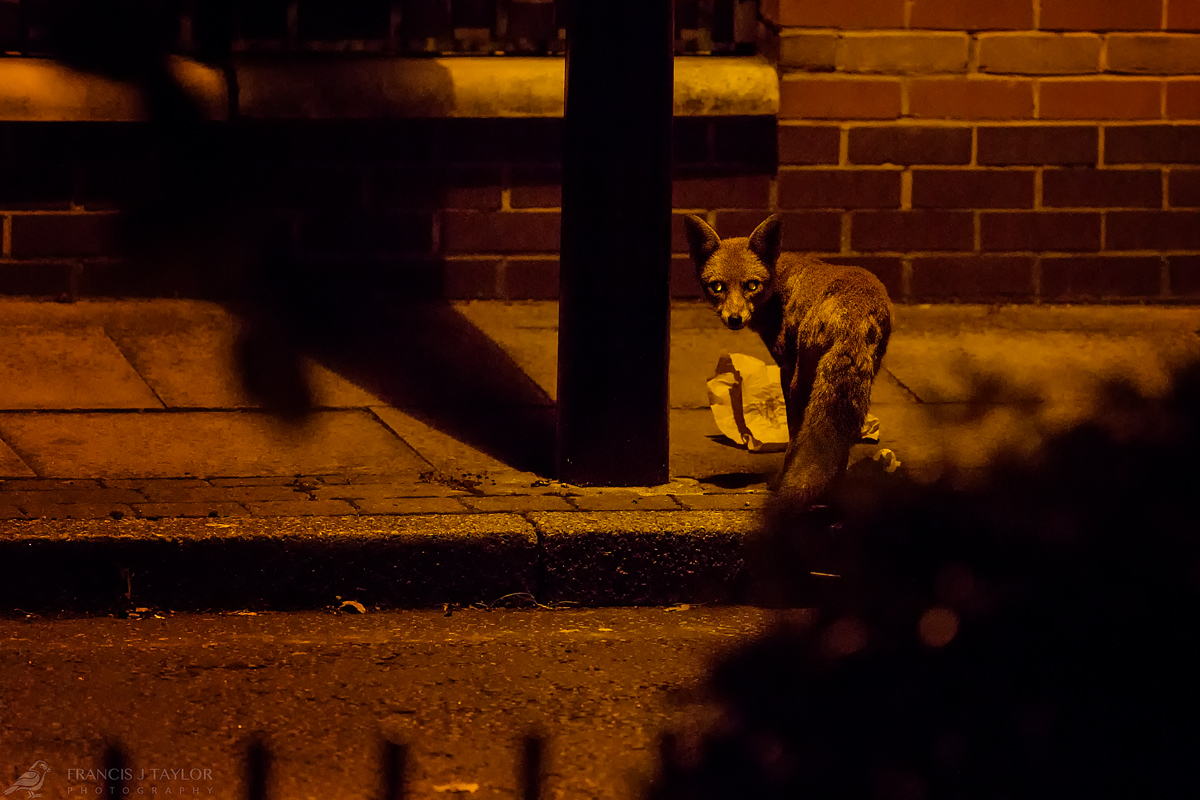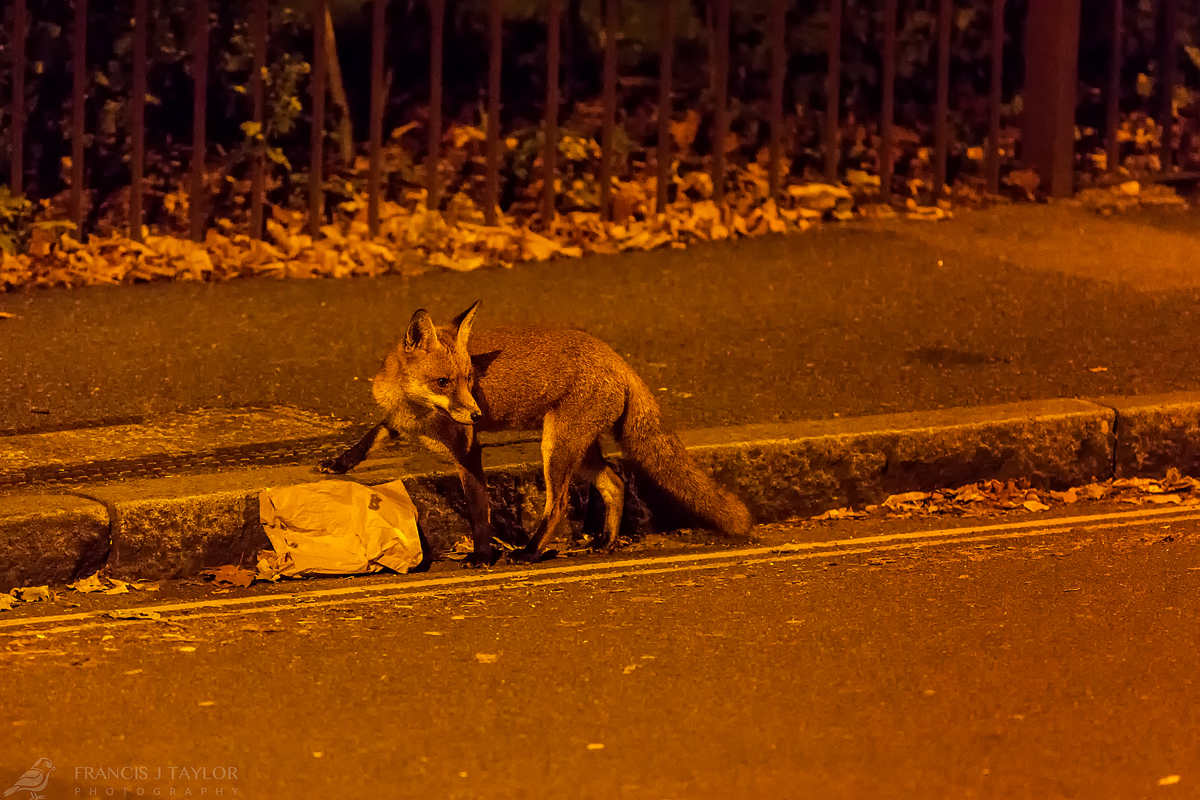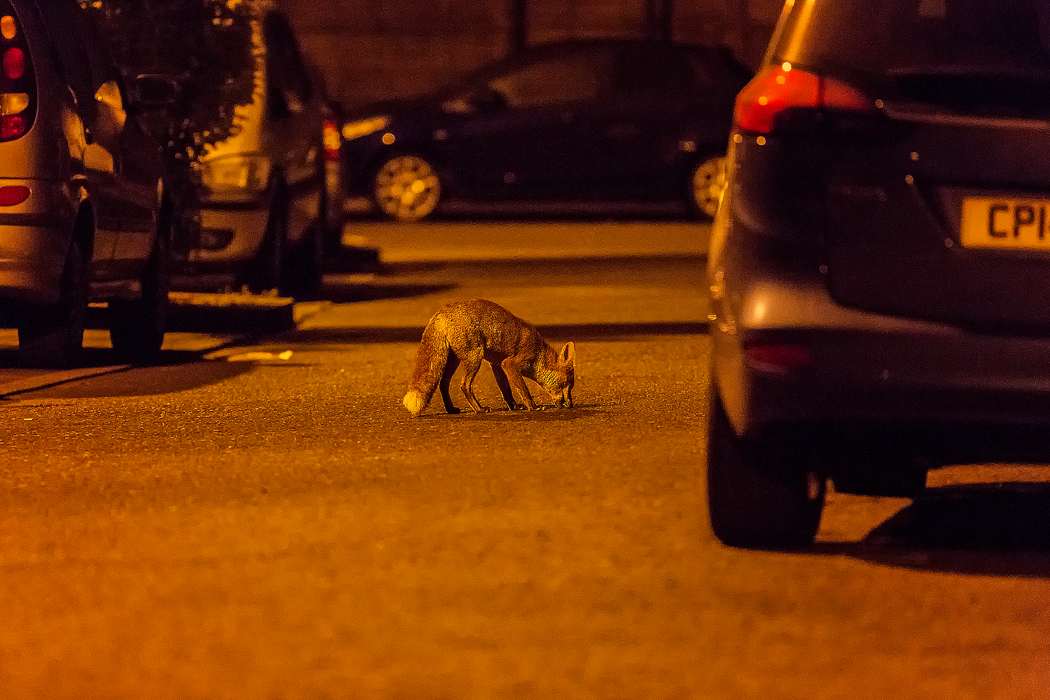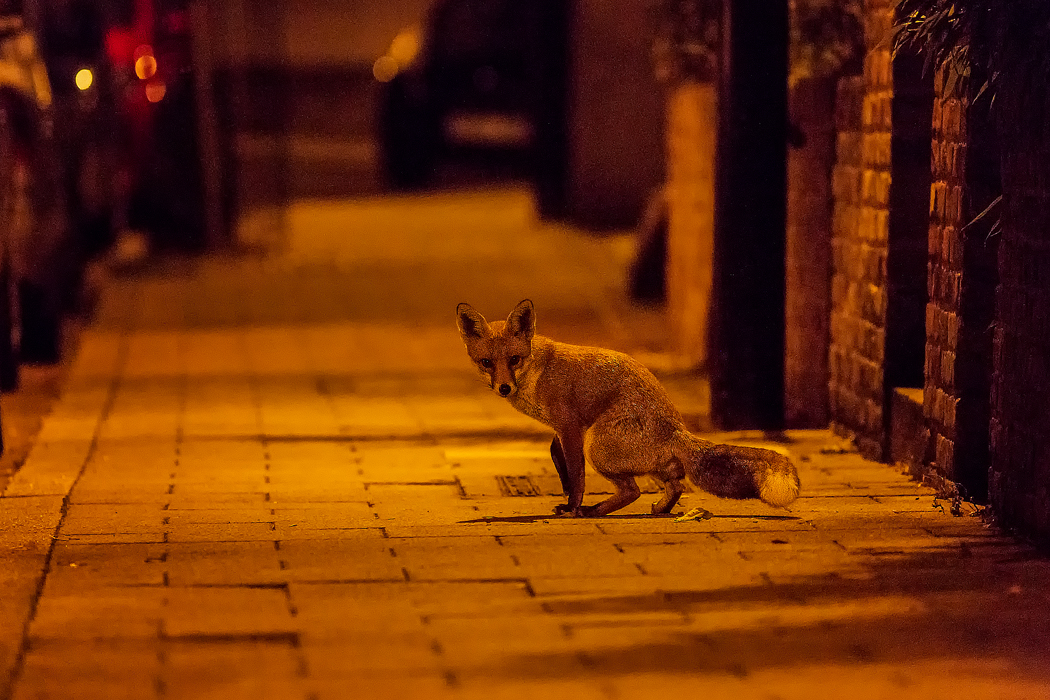Published: 22nd September 2015 at 5:27 pm. Posted in Blog.
Whilst I was down in London for the BWPA awards I decided to run a mini project on the urban wildlife around the city, my main focus for the week being the urban fox. The area around my sister’s flat in Camberwell has a large population of foxes and with a wide view over the nearby park from the balcony, it seemed like a great place to start. I focused my efforts between 12-3 AM, as whilst some of the foxes are active earlier the area is very busy, increasing the chances of outside disturbance. A hunting fox never stays in one place for long and typically follows a set route, so once I had established where and when the foxes were most active, I started capturing some images.
This type of photography at night is extremely demanding on the camera’s sensor. The action comes and goes very quickly so there’s no option of a long exposure. I often found myself having to shoot at minimum aperture (f/4) and around 1/60 sec to maximise light, even still I was having to use upwards of ISO 8000, producing a lot of grain in the images.
This is one of the first close portraits I captured. A passing car had chucked the remnants of a takeaway out the window, so whilst the fox was preoccupied sniffing around I snuck around the corner crouching low and grabbed a couple of shots.
Alongside a series of portraits I also like to show some of the behavioural aspects and traits of the foxes for a more complete look into their lives.
The reflection in the fox’s eyes is caused by light from the street lamps bouncing off the tapetum lucidum, an extra layer of tissue in the eye. Located immediately behind the retina it reflects visible light back through the eye, increasing the light available to the photoreceptors and contributing to the superior night vision of the animal. Many of the animals with this extra layer of tissue are either nocturnal or cathemeral, making it an extremely useful adaptation, particularly for carnivores that hunt their prey at night.
Urban foxes are not picky, and whilst perfectly capable of catching small mammals and birds for themselves, they are lazy by nature and household leftovers contribute to large portion of their diet. This fox was rooting around in the bag for some scraps when it heard something in the shadows and froze to assess the threat.
After finding its prize, a fox will often take the food somewhere quieter to finish off, sometimes even burying leftover scraps for harsher times.
Foxes will often scent mark areas where they find food to warn rivals away and establish territorial boundaries.
Whilst challenging, I thoroughly enjoyed my week photographing urban foxes and hope to continue the project back in Sheffield. As I have a bit more space here, I can hopefully try out some new techniques to capture a different view of the life of the urban fox. Thanks for looking, feel free to share.
